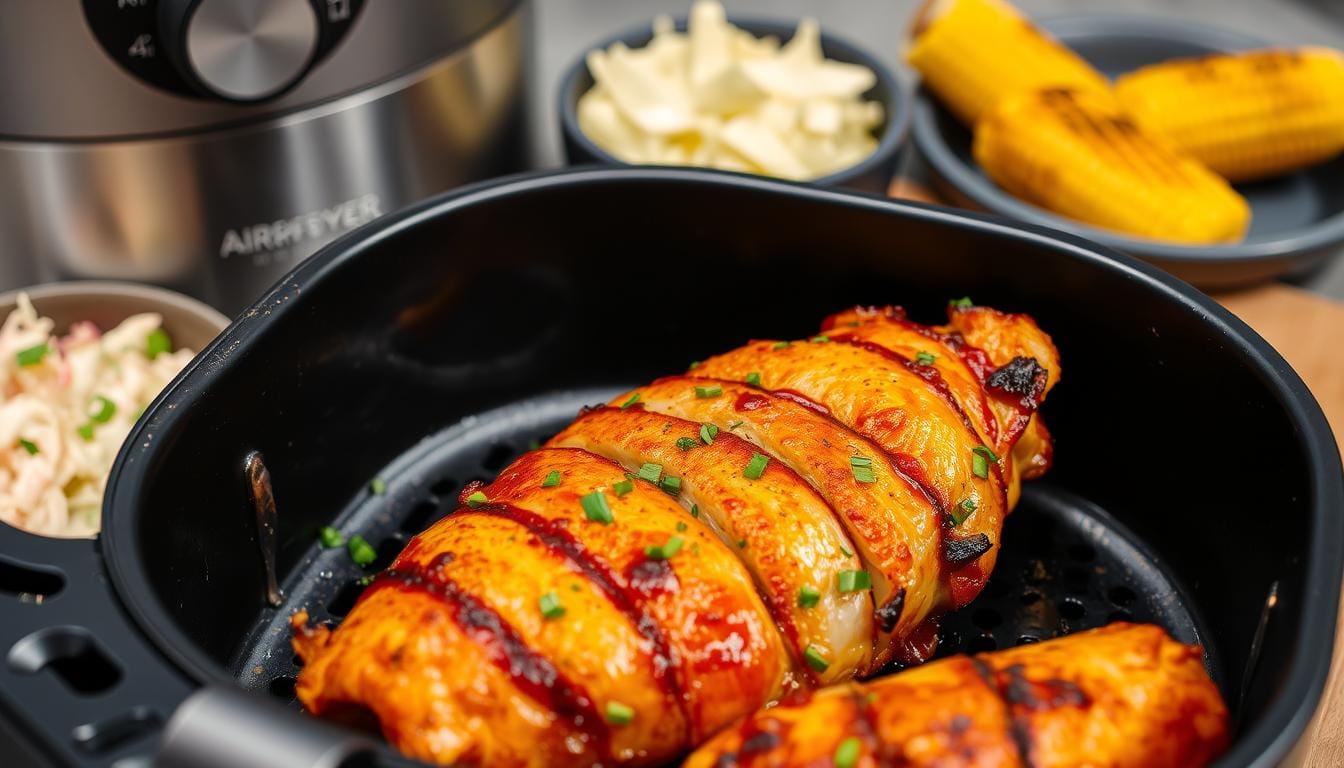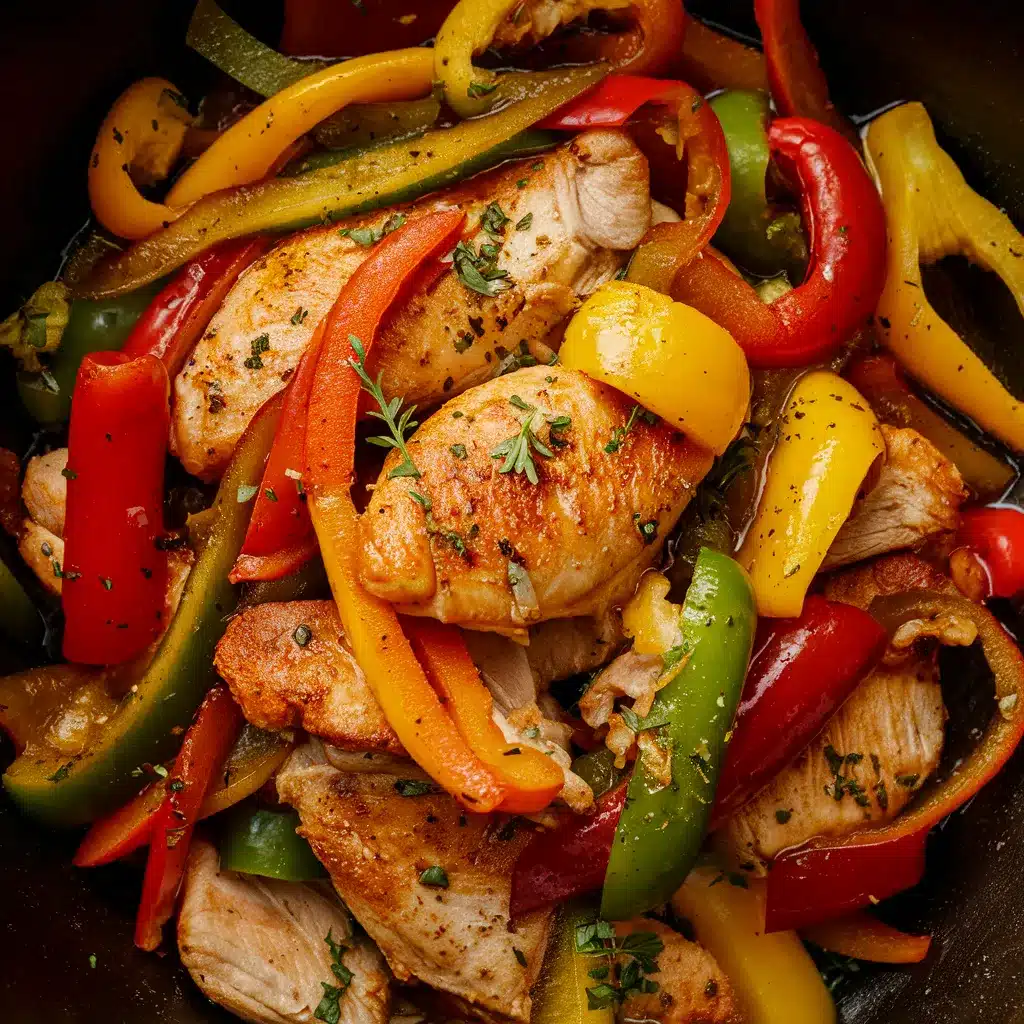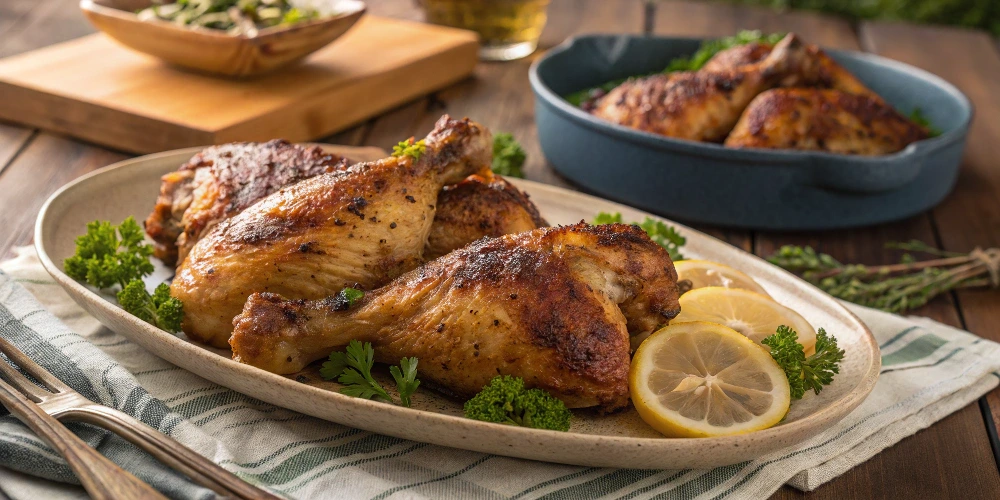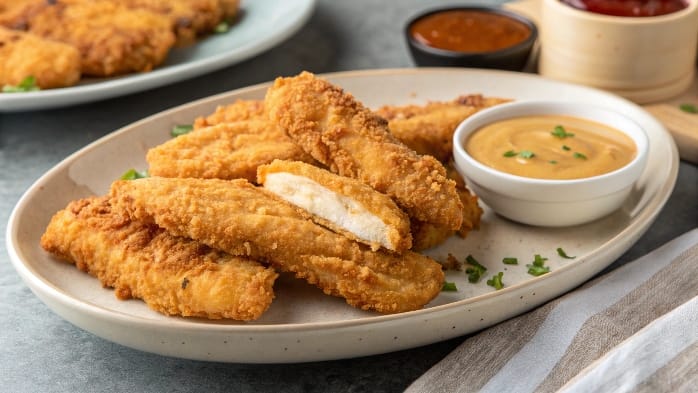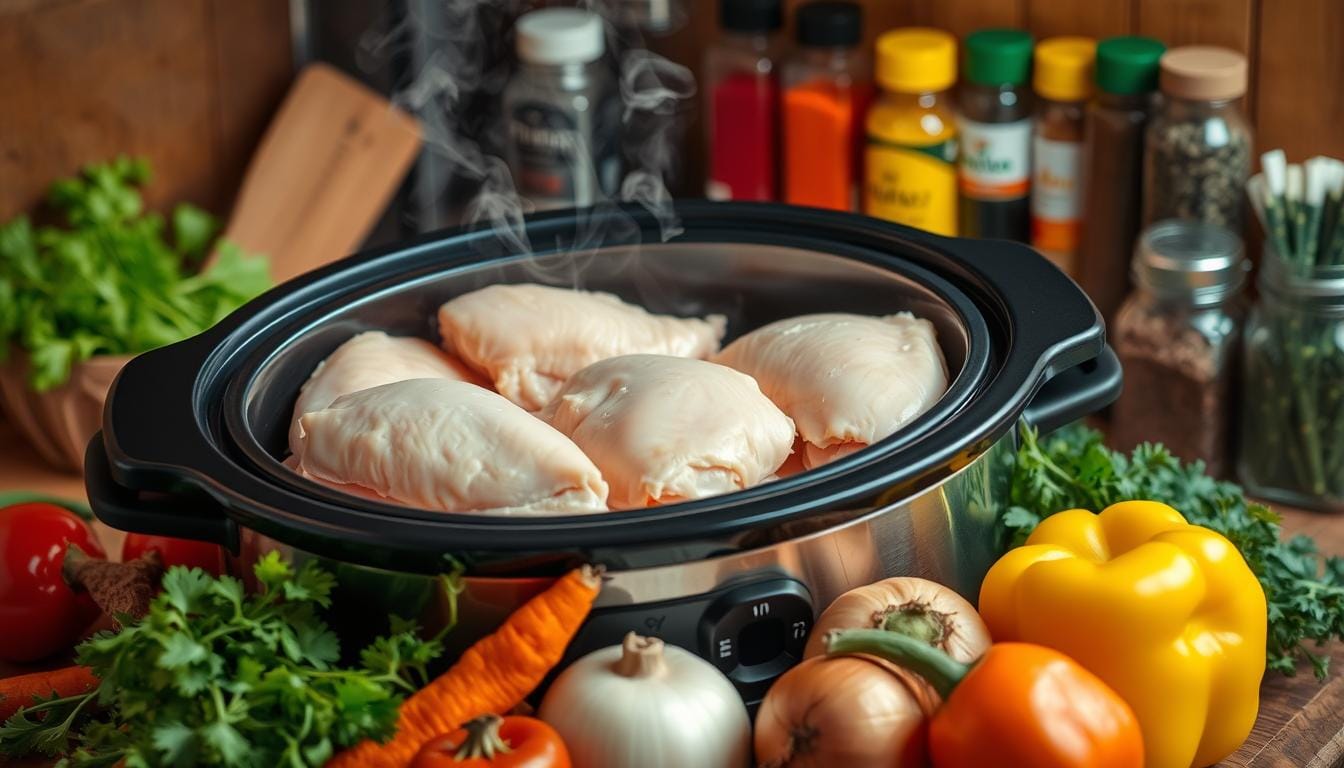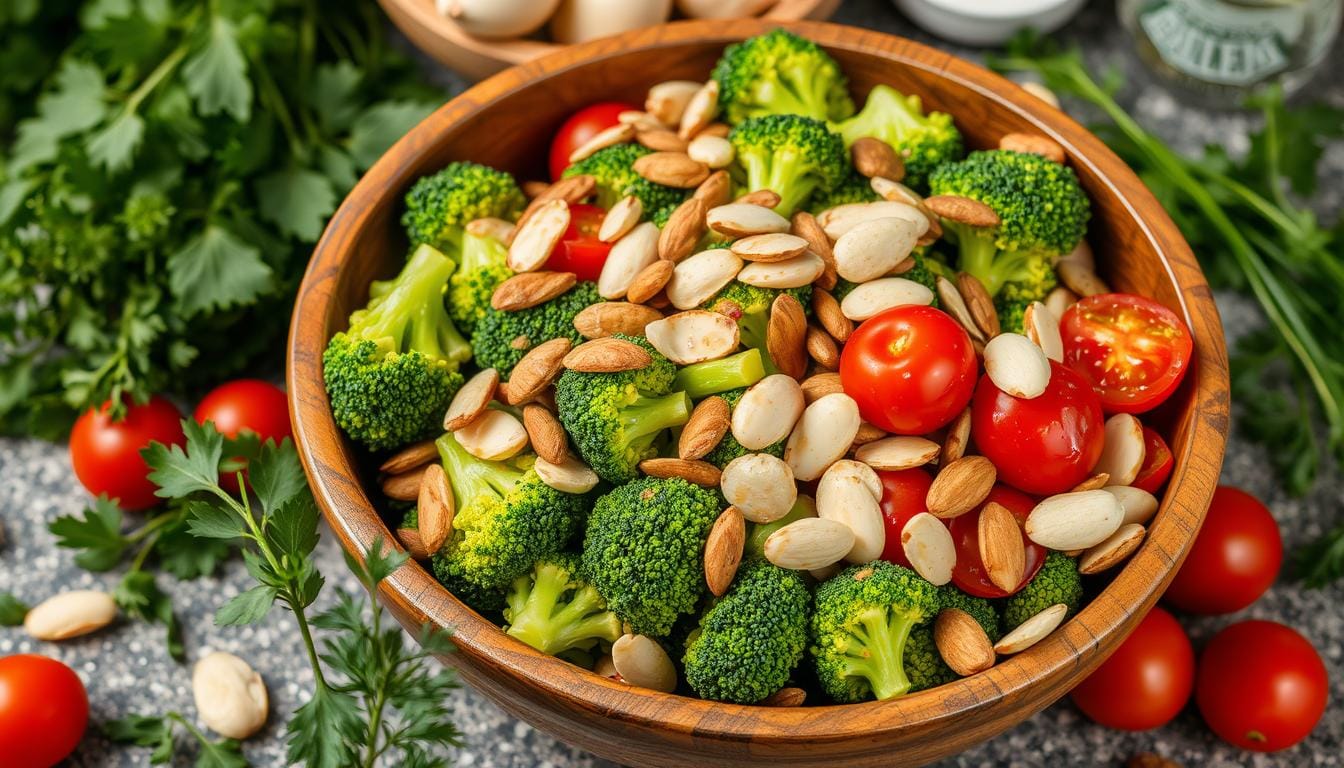Braised Chicken in the Oven with Crispy Skin Recipe
Mastering the technique of preparing braised chicken in the oven with crispy skin recipe ensures a meal that is both succulent and visually appealing. Braising chicken involves slow-cooking it in a flavorful liquid, allowing the meat to absorb moisture and flavor.
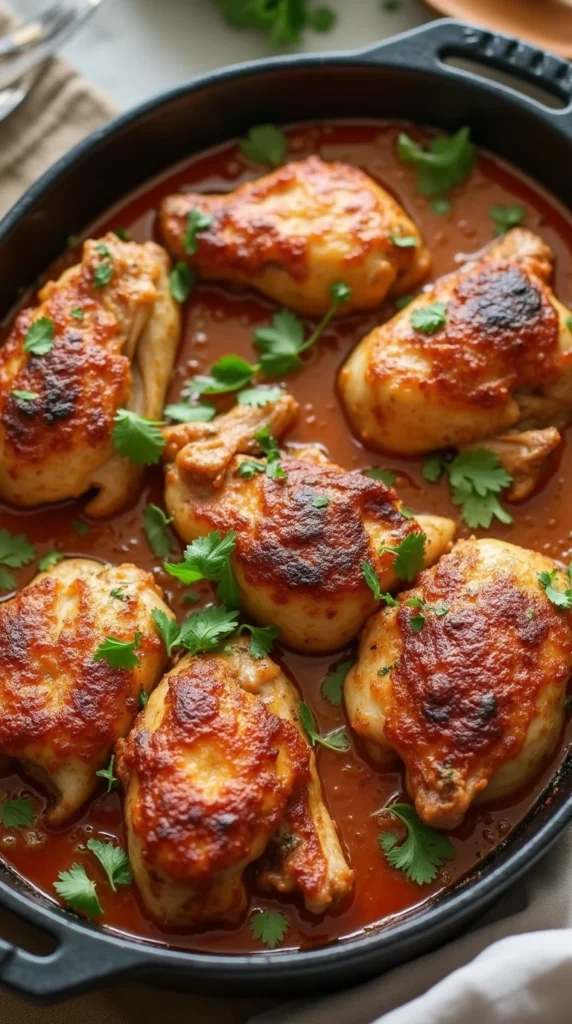
Table of Contents
What Makes Braising Unique?
Braising stands out from other cooking techniques due to its ability to marry the best qualities of dry and moist heat. The initial searing step creates a caramelized crust, while the slow cooking process gently breaks down connective tissues, resulting in tender, fall-off-the-bone chicken. This technique is particularly suited to less expensive or tougher cuts of chicken, such as thighs and drumsticks, which benefit greatly from the long cooking time.
🥘Ingredients for Success
Essential items, optional ingredients for flavor
- 6 bone-in, skin-on chicken thighs
- 2 tablespoons olive oil
- 1 medium onion, thinly sliced
- 4 garlic cloves, minced
- 1 cup chicken broth
- 1/2 cup dry white wine (optional)
- 2 tablespoons soy sauce
- 2 teaspoons paprika
- 1 teaspoon dried thyme
- 1 teaspoon rosemary
- 1 teaspoon salt
- 1/2 teaspoon black pepper
- 1 lemon, sliced
- 2 tablespoons unsalted butter
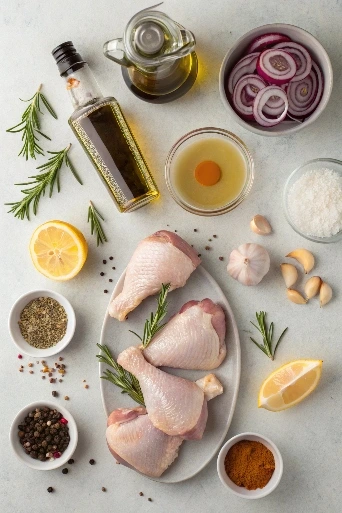
👩🏻🍳 Choosing the Right Chicken:
Fresh vs. Frozen Chicken
Fresh Chicken
Fresh chicken is sold refrigerated and has not been subjected to freezing temperatures. Here are some key points to consider:
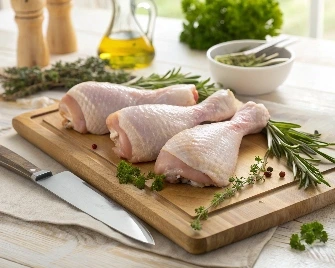
- Pros:
- Flavor and Texture: Many chefs prefer fresh chicken because it often has a superior flavor and a tender texture.
- Ready to Use: Fresh chicken does not require thawing, making it convenient for immediate use.
- Visual Inspection: You can assess the quality by observing its color, smell, and overall appearance.
- Cons:
- Short Shelf Life: Fresh chicken needs to be used or frozen within 1–2 days of purchase.
- Storage Requirements: Requires proper refrigeration to maintain its quality.
Frozen Chicken
Frozen chicken is kept at subzero temperatures, preserving it for extended periods. Here are the considerations:
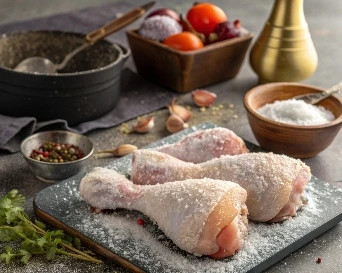
- Pros:
- Longer Shelf Life: Frozen chicken can be stored for months without spoiling.
- Convenience: Buying in bulk and storing saves time and money.
- Versatility: Many frozen options come pre-seasoned or pre-cut for specific recipes.
- Cons:
- Thawing Required: Frozen chicken needs to be defrosted, which can be time-consuming.
- Texture Changes: Improper thawing can lead to a less desirable texture.
- Quality Concerns: Freezing may slightly affect the flavor and moisture content.
The Science Behind Braising
Braising is a time-honored cooking technique that combines moist and dry heat to transform tough cuts of meat and fibrous vegetables into tender, flavorful dishes. This method relies on slow cooking in a small amount of liquid, which allows for a unique interplay of heat, moisture, and time to develop complex flavors and textures.
How Braising Works
Braising is a two-step process that blends searing and simmering:
- Searing (Dry Heat):
- The process begins by browning the ingredients (usually meat or vegetables) in fat over high heat.
- This step triggers the Maillard reaction, a chemical process that develops rich, deep flavors and creates a beautiful crust.
- Simmering (Moist Heat):
- After searing, the ingredients are partially submerged in a flavorful liquid such as broth, wine, or water.
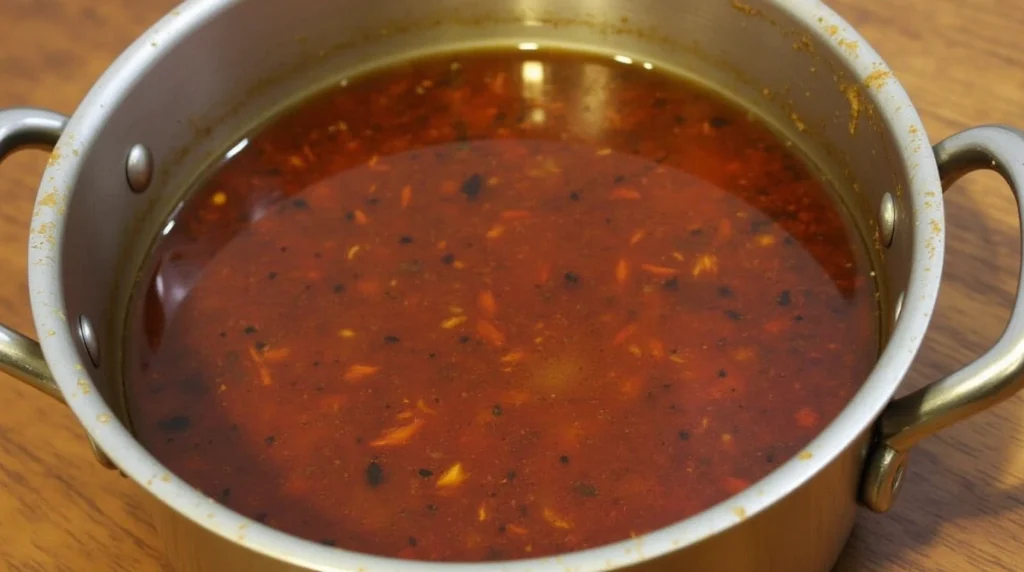
The dish is then covered and cooked slowly at a low temperature, either on the stovetop or in the oven.
During simmering, a combination of heat and moisture breaks down collagen (connective tissue in meat) into gelatin, resulting in a tender, silky texture. The extended cooking time also allows the liquid to penetrate the ingredients, enhancing flavor and juiciness.
Benefits for Flavor and Texture
Braising offers several unique benefits that make it a favorite among chefs and home cooks alike:
Tenderizes Tough Cuts:
Tough, inexpensive cuts of meat like brisket, shank, or pork shoulder are ideal for braising. The slow cooking process softens connective tissues, making the meat fork-tender.
Enhances Flavor:
The searing step adds depth and complexity to the dish through caramelization.
🍲 Step-by-Step Recipe
Step 1: Preheat your oven to 375°F (190°C).
Step 2: Heat some olive oil in a big skillet that’s safe for the oven, using medium-high heat.
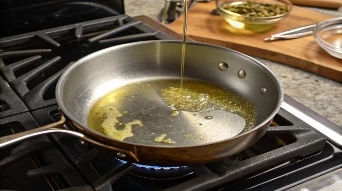
Step 3: Season chicken thighs with salt, pepper, and paprika. Place them skin-side down in the skillet and sear for 5-6 minutes, or until the skin is golden and crispy. Cook the chicken on the other side for 2 minutes, allowing it to develop a light golden crust. Remove and set aside.
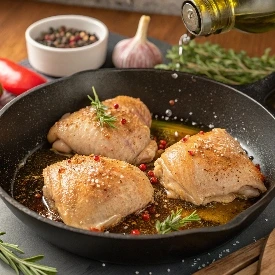
Step 4: Reduce heat to medium, then add onions and garlic to the skillet. Sauté until fragrant, about 2-3 minutes.
Step 5: Stir in chicken broth, white wine, soy sauce, thyme, and rosemary, scraping up any browned bits from the skillet.
Step 6: Return chicken thighs to the skillet, skin-side up, and spoon some of the sauce over the top. Add lemon slices and butter around the chicken.
Step 7: Transfer the skillet to the oven and braise for 25-30 minutes, or until the chicken is fully cooked (internal temperature of 165°F/74°C).Salad
Remove from the oven and let rest for 5 minutes before serving.
Frequently Asked Questions
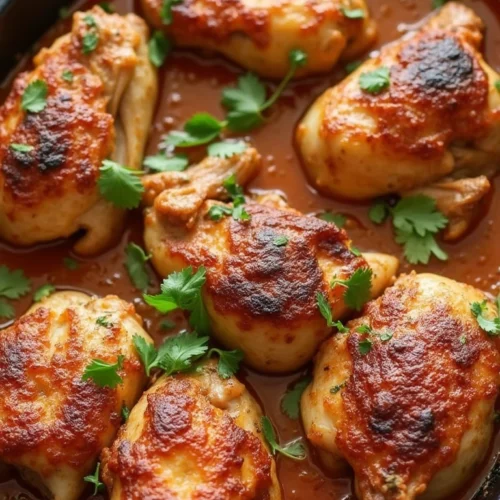
The Ultimate Braised Chicken in the Oven with Crispy Skin Recipe
Ingredients
- 6 bone-in skin-on chicken thighs
- 2 tablespoons olive oil
- 1 medium onion thinly sliced
- 4 garlic cloves minced
- 1 cup chicken broth
- 1/2 cup dry white wine optional
- 2 tablespoons soy sauce
- 2 teaspoons paprika
- 1 teaspoon dried thyme
- 1 teaspoon rosemary
- 1 teaspoon salt
- 1/2 teaspoon black pepper
- 1 lemon sliced
- 2 tablespoons unsalted butter
Instructions
- Preheat your oven to 375°F (190°C).
- Heat olive oil in a large oven-safe skillet over medium-high heat.
- Season chicken thighs with salt, pepper, and paprika. Place them skin-side down in the skillet and sear for 5-6 minutes, or until the skin is golden and crispy. Flip and sear the other side for 2 minutes. Remove and set aside.
- Reduce heat to medium, then add onions and garlic to the skillet. Sauté until fragrant, about 2-3 minutes.
- Stir in chicken broth, white wine, soy sauce, thyme, and rosemary, scraping up any browned bits from the skillet.
- Return chicken thighs to the skillet, skin-side up, and spoon some of the sauce over the top. Add lemon slices and butter around the chicken.
- Transfer the skillet to the oven and braise for 25-30 minutes, or until the chicken is fully cooked (internal temperature of 165°F/74°C).
- Remove from the oven and let rest for 5 minutes before serving.
Notes
- For a deeper flavor, marinate the chicken thighs for 1 hour before cooking.
- If you don’t have white wine, substitute with additional chicken broth.
- Ensure the skillet is oven-safe to avoid transferring the chicken to a different dish.

